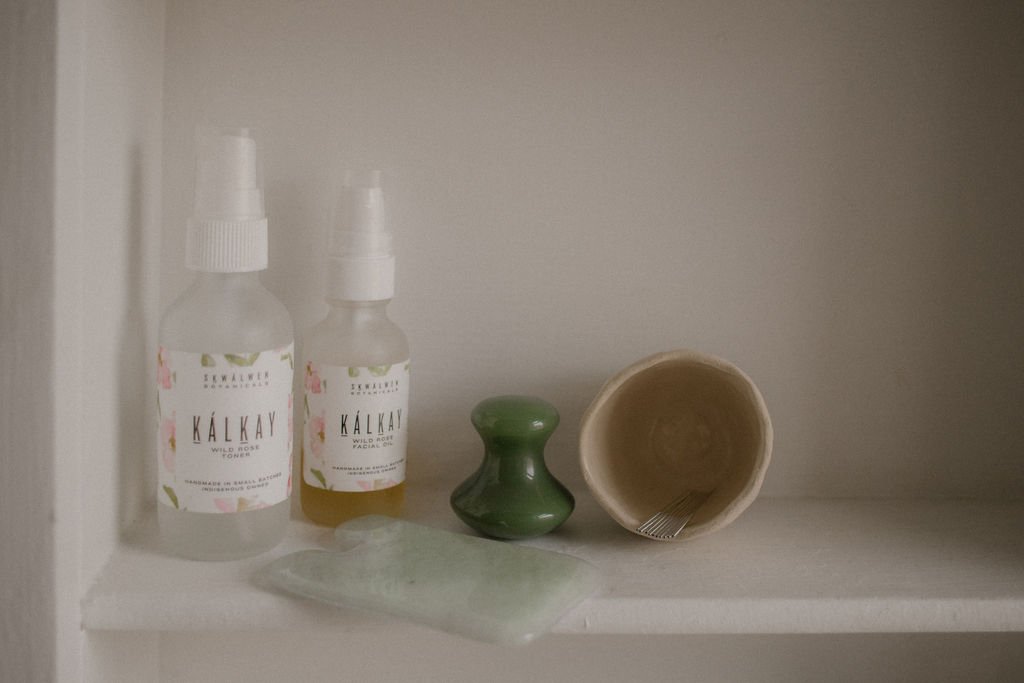Gua Sha 101
The History of Gua Sha
Before diving into the benefits of gua sha (pronounced like gwa-shaw) or learning how to use a gua sha stone as part of your skincare routine it is important to acknowledge where gua sha began. Gua sha has its roots in traditional Chinese Medicine and East Asia where it has been used as a traditional family folk medicine for hundreds if not thousands of years. Additionally, it has been used in clinical practice by acupuncturists and doctors of Chinese medicine as a healing modality very much unrelated to beauty.
Gua sha was not originally used for cosmetic purposes on the face like it is popular for today, but rather it was used on the body to relieve stagnant qi and blood which lead to relief from congestion, fever and pain. The Chinese words ‘gua’ and ‘sha’ roughly translate to ‘to scrape’ and ‘sand’ respectively. When used on the body, the scraping of the gua sha stone causes redness or petechiae that appears like red or purple sand on the body.
It is important to acknowledge the history of gua sha as there has been plenty of cultural appropriation in the beauty industry over the last number of years. Many companies that sell gua sha tools fail to acknowledge the important cultural history behind these stones. Some may see it as just a beauty trend, when in fact it has been an important part of Chinese medicine history for some time.
I love following the accounts below on Instagram for learning new techniques and for more info on gua sha.
@treatmentbylanshin
@yang.face
@dr.debbie.kung
@luminaewellness
Why Gua Sha?
Now that we have acknowledged the roots of gua sha let’s talk about the benefits of facial gua sha!
There are many different types of gua sha stones. I have a jade one and love how it holds the cold. When using it you want to start in the middle of your face and apply gentle pressure as you move the tool outwards. I see many people hold the stone at a 90-degree angle when they are first using it and you actually want to use the stone so it is held at a closer angle against your face. It is important to use some kind of facial oil or serum while doing gua sha on the face so you are not pulling at the delicate skin. The oils I am loving these days are the Skwalwen Botanicals Kalkáy Wild Rose Facial Oil and Indie Lee Squalane Oil (both can be found at The Green Kiss in Victoria.
The gentle scraping motion of the gua sha stone on the skin encourages blood to rise to the surface of the skin. This encourages the skin’s natural metabolic healing process, accelerates collagen production, increases blood circulation and rejuvenates tired skin.
This process also encourages the release of heme-oxygenase-1, a hormone that stimulates the production of antioxidant and anti-inflammatory molecules. The result is a more even skin tone and firmer skin.
Facial gua sha feels like a soothing massage and can help reduce tension in the facial muscles. It also helps to soften wrinkles, improves lymphatic drainage, and reduces puffiness and inflammation all of which can lead to a more radiant complexion!
How to do facial gua sha
I have linked a mini tutorial I shared on my Instagram here.
If you want a more in-depth tutorial I recommend watching the video below from Sandra Lanshin Chiu L.Ac.
My facial rejuvenation acupuncture facials include facial gua sha after the acupuncture needles have been removed. Do you live in Victoria and want to book an appointment? Check out my 1:1 services here!


